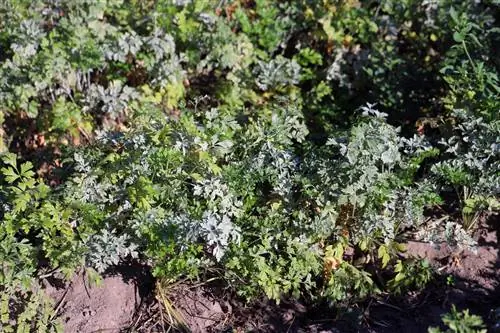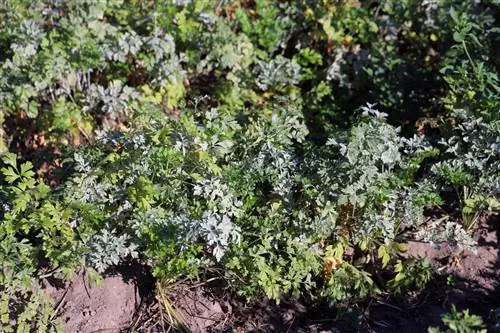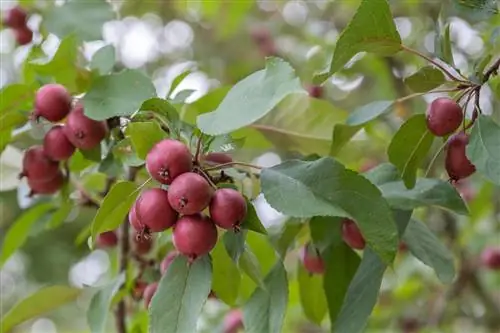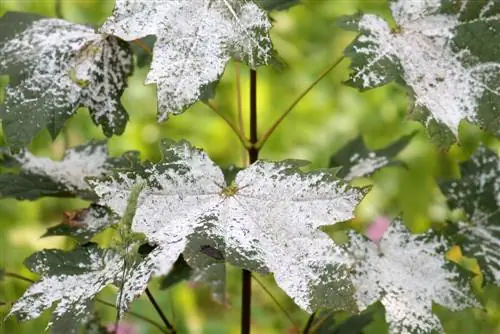- Author admin [email protected].
- Public 2024-01-05 20:48.
- Last modified 2025-01-23 11:19.
Having your own herb garden makes the hearts of many chefs beat faster. Fresh and he althy herbs add the right flavor to many dishes. If the location is chosen incorrectly, some of your plants may become infected with powdery mildew.

Which herbs are affected by powdery mildew?
Many herbs such as peppermint, lemon balm, oregano and borage are susceptible to both types of mildew. The Mediterranean herbs rosemary and sage are rarely affected by downy mildew in the right location. Downy mildew usually occurs on parsley.
How do I recognize powdery mildew on herbs?
The two forms of powdery mildew manifest themselves in herbs through different identifying characteristics. However, both species show a white to grayish fungal growth. In the case of powdery mildew, you will find it on the top of the leaf, where you can wipe the coating off with your hand. This mushroom mainly forms in nice, warm summer weather and is therefore also called fair-weather mushroom. Downy mildew appears on herbs as yellowish-brown spots on the leaves. In addition, there is a mushroom lawn on the underside of the leaves.
How do I treat mildew on herbs?
If herbs are infected with powdery mildew, you should firstremove all affected parts of the plant It is better to dispose of them with household waste. You can use various remedies based on home remedies such as milk, baking soda, rapeseed oil or vinegar to combat powdery mildew. A garlic decoction can be used against both real and downy mildew. It is particularly important to use these products regularly. For cold-loving herbs such as oregano, the pH value of the soil can be increased with algae lime or rock dust.
Can I prevent powdery mildew on herbs?
The best preventive measure against mildew isthe right locationand appropriate care. This results in strong plants that are less susceptible to fungal pathogens. You can also strengthen the herbs with horsetail tea. Avoid fertilizing with high levels of nitrogen as this substance makes the leaves more sensitive. Plant your herbs with enough space so that they can dry quickly. The space in the herb garden may not be ideal for the plant in question.
Can I eat herbs with mildew?
Powdery mildew can be washed off herbs so the plants can be eaten. Only people with a high risk of allergies should avoid these herbs. However, powdery mildew often destroys the aroma and the herbs taste bland. If you have downy mildew, you should refrain from eating the herbs, as the fungus penetrates the structure of the leaves and therefore cannot be washed off.
Tip
Herbs as protection against mildew
Some herbs are not affected by the various mildew fungi. These include chervil, chives and basil. Planting these herbs between sensitive plants will limit the further spread of mildew fungi.






